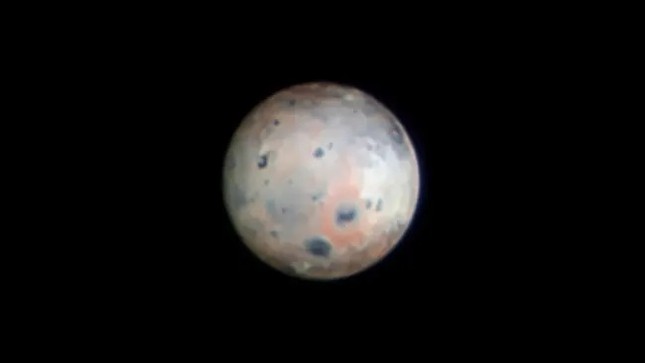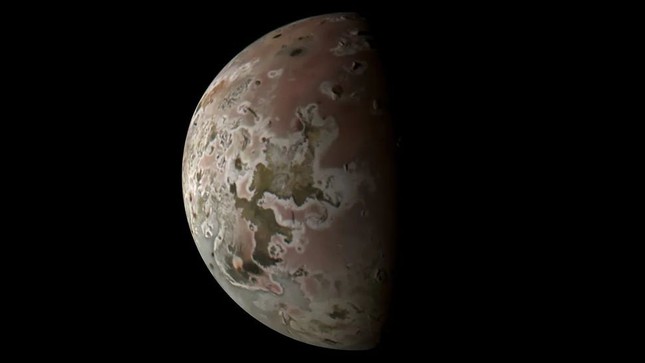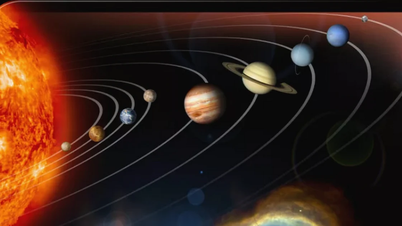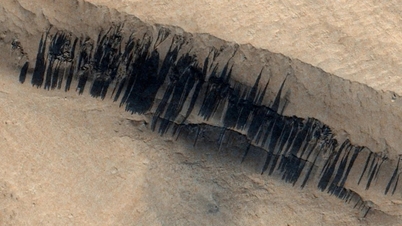TPO - Using a telescope located on a mountain in Arizona, USA, scientists captured images of Jupiter's active moon Io.
 |
The image combines three spectral bands – infrared, red, and yellow – to highlight the red ring around the Pele volcano (below and to the right of the moon's center) and the white ring around Pillan Patera, to the right of Pele. (Image: INAF/Large Binocular Telescope Observatory/Georgia State University; IRV observations by SHARK-VIS/F. Pedichini) |
To capture these views, the team used a camera called SHARK-VIS, mounted on the Large Binocular Telescope (LBT) on Arizona’s Mount Graham. The new images outline features on Io’s surface up to 80 kilometers wide, a resolution that has so far only been possible with the Jupiter probe.
This is equivalent to photographing an object the size of a dime from 100 miles away, according to a statement from the University of Arizona, which manages the telescope.
Jupiter's moon Io as seen from Earth
In fact, the new images of Io are so complex that scientists can make out overlapping layers of lava spewed by two active volcanoes just south of the moon's equator.
An LBT image of Io taken in early January shows a dark red sulfur ring around Pele, a prominent volcano that regularly spews Alaska-sized plumes up to 186 miles (300 km) above Io's surface.
That circle appears to be partially obscured by white debris (representing frozen sulfur dioxide) from a neighboring volcano called Pillan Patera, which is known to erupt less frequently.
By April, Pele's red ring was again visible almost completely in images taken by NASA's Juno spacecraft during its closest flyby of the moon in two decades, revealing a dump of freshly erupted material from the active volcano.
 |
Image of Jupiter's moon Io, taken by the Juno spacecraft orbiting Jupiter. (Image: NASA/JPL-Caltech/SwRI/MSSS/Kevin M. Gill) |
“It’s a competition between the Pillan eruption and the Pele eruption,” study co-author Imke de Pater of the University of California, Berkeley, said in a separate statement. “As soon as Pillan completely stops, it will be overshadowed by the red color of Pele.”
Io's volcanic eruptions, including those of Pele and Pillan Patera, are driven by frictional heat generated deep within the moon as a result of the gravitational tug-of-war between Jupiter and two other nearby moons, Europa and Ganymede.
Tracking Io's volcanic activity, which has likely devastated the world for most (if not all) of its 4.57 billion years of existence, could help scientists learn about how eruptions have shaped the moon's entire surface.
Surface changes on Io, actually the most volcanically active body in the solar system, have been recorded since the Voyager spacecraft first detected volcanic activity on the moon in 1979. A similar series of eruptions from Pele and Pillan Patera was also observed by NASA's Galileo spacecraft during its voyage to the Jupiter system from 1995 to 2003.
“Although this type of resurfacing event may be common on Io, few have been detected due to the rarity of spacecraft visits and the low spatial resolution previously available from Earth-based telescopes,” Davies and colleagues write in the new study, published today. “SHARK-VIS opens a new era in planetary imaging.”
SHARK-VIS, built by the Italian National Institute for Astrophysics at the Rome Astronomical Observatory, achieves its unprecedented sharpness by working in tandem with the LBT's adaptive optics system, which shifts its twin mirrors in real time to compensate for blurring caused by atmospheric turbulence. Algorithms then select and combine the best images, creating the sharpest portraits of Io ever achieved by an Earth-based telescope.
According to Live Science
Source: https://tienphong.vn/nhung-buc-anh-kho-tin-ve-mat-trang-cua-sao-moc-post1644034.tpo







![[Photo] Cat Ba - Green island paradise](/_next/image?url=https%3A%2F%2Fvphoto.vietnam.vn%2Fthumb%2F1200x675%2Fvietnam%2Fresource%2FIMAGE%2F2025%2F12%2F04%2F1764821844074_ndo_br_1-dcbthienduongxanh638-jpg.webp&w=3840&q=75)





































































































Comment (0)